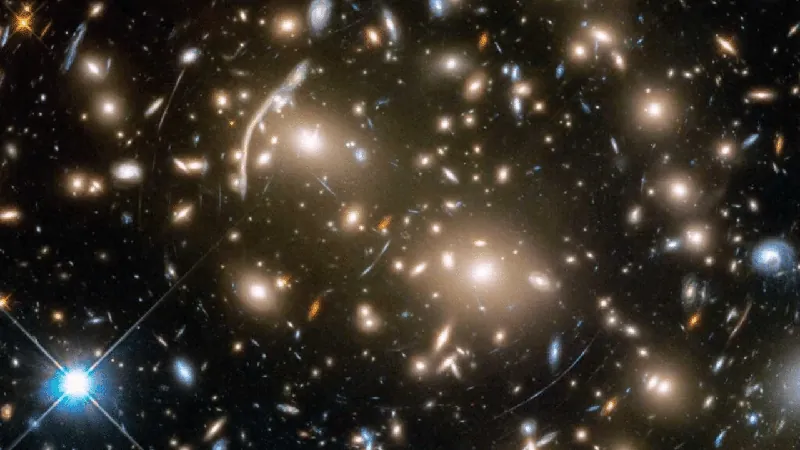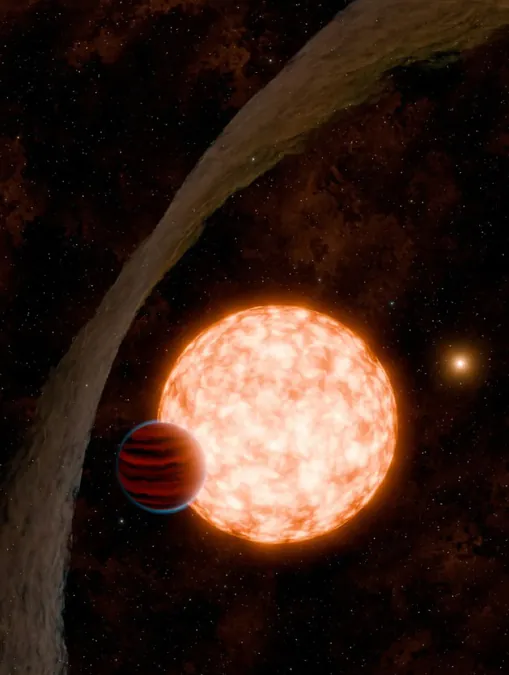
Unveiling the Cosmic Enigma: NASA’s James Webb Telescope Captures Spectacular Einstein Zig-Zag Effect!
2024-11-23
Author: Rajesh
Introduction
In an extraordinary breakthrough, the James Webb Space Telescope (JWST) has unveiled a cosmic enigma known as the Einstein zig-zag phenomenon. This stunning discovery emerges from observations of the quasar J1721+8842, where its light has been intriguingly twisted into six distinct images due to a gravitational lensing effect. The implications of this finding could reshape our understanding of the universe's structure and dynamics.
Understanding Gravitational Lensing
Gravitational lensing, a phenomenon predicted over a century ago by Albert Einstein's general theory of relativity, occurs when massive objects like galaxies warp the fabric of space-time. As this warping happens, the light from more distant objects—such as quasars—can be distorted and magnified, resulting in captivating multiple images.
The Case of Quasar J1721+8842
In the case of quasar J1721+8842, situated 11 billion light-years away, it appeared as if two intervening galaxies converged perfectly, creating a dazzling display of six images. A closer galaxy, whose light has traveled for 2.3 billion years, plays a pivotal role as it acts as a cosmic lens for the more remote galaxy, giving rise to the zig-zag patterns that astronomers are now staring in awe at.
A Groundbreaking Observation
This instance marks a groundbreaking observation in the field of astrophysics, as it is the first time researchers have identified a dual-lens arrangement capable of producing such intricate images via gravitational lensing. Prior to this finding, the Pan-STARRS telescope had spotted J1721+8842 in 2017, revealing four light dots. However, thanks to JWST’s superior imaging capabilities, two additional, fainter images have now been detected, confirming the spectacular six-image effect.
Significance of the Discovery
Frédéric Dux, a researcher at the EPFL Laboratory of Astrophysics, highlights the significance of this rare alignment. "This configuration allows us to investigate both the remote quasar and the properties of the lensing galaxies," he stated, emphasizing how unprecedented observations like this could lead to new insights.
Implications of the Discovery
The implications of this discovery are monumental:
Revisiting the Hubble Constant
1. The Hubble constant, pivotal in measuring the rate of the universe's expansion, has historically presented inconsistencies—often referred to as the Hubble tension. The Einstein zig-zag effect could provide a new, refined method for calculating these values, potentially resolving longstanding disputes within cosmology.
Investigating Dark Energy
2. Scientists are also using the zig-zag light patterns to probe into dark energy—the enigmatic force driving the universe's accelerating expansion. By analyzing the trajectories of light within this cosmic setup, insights into dark energy and its interaction with other universe parameters can be derived, addressing uncertainties that have puzzled researchers for decades.
Conclusion
Dux further emphasized that the unique dual-lens system presented by this discovery proves invaluable for cosmological studies and offers a level of accuracy unattainable through traditional observational methods.
As the JWST continues to unravel the cosmos’ most profound secrets, the Einstein zig-zag phenomenon stands as a testament to the capabilities of modern astrophysics—opening doors to unexplored realms of our universe that were once thought to be mere figments of imagination. Stay tuned as astronomers further unveil the depths of space and time with these groundbreaking findings!




 Brasil (PT)
Brasil (PT)
 Canada (EN)
Canada (EN)
 Chile (ES)
Chile (ES)
 España (ES)
España (ES)
 France (FR)
France (FR)
 Hong Kong (EN)
Hong Kong (EN)
 Italia (IT)
Italia (IT)
 日本 (JA)
日本 (JA)
 Magyarország (HU)
Magyarország (HU)
 Norge (NO)
Norge (NO)
 Polska (PL)
Polska (PL)
 Schweiz (DE)
Schweiz (DE)
 Singapore (EN)
Singapore (EN)
 Sverige (SV)
Sverige (SV)
 Suomi (FI)
Suomi (FI)
 Türkiye (TR)
Türkiye (TR)